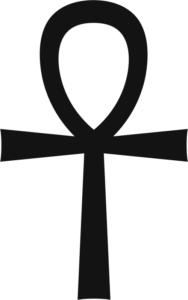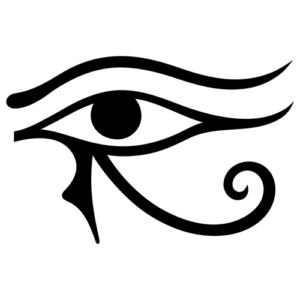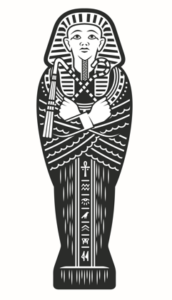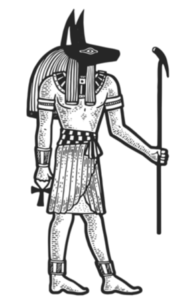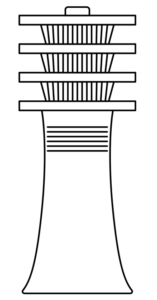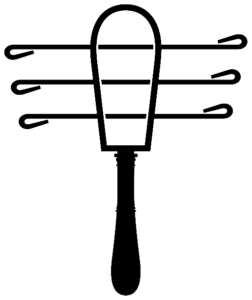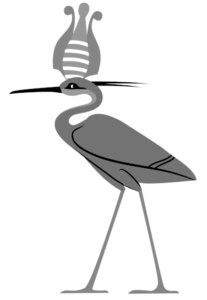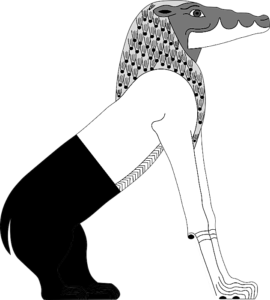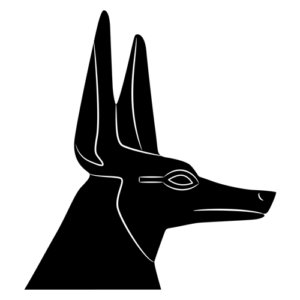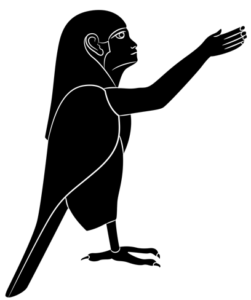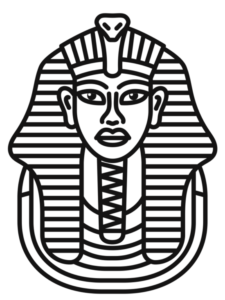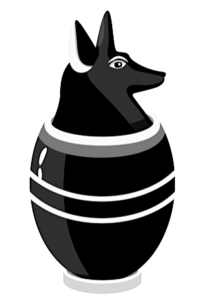
Religion and symbolism were an important part of everyday life in ancient Egypt, especially regarding life and death. Egyptians believed the spirit world was always present in the physical world.1
Symbols were a way for Egyptians to pass their beliefs and values down to the next generation, as many couldn’t read or write.1
Symbols and figures of gods and goddesses were also used in tombs to help guide the deceased’s soul through obstacles in their journey to the afterlife.2
Whether you’re of Egyptian descent, on an academic hunt, or simply curious about ancient Egypt, we have the list to guide you in your search for Egyptian symbols of life and death. We also share the ways people continue to use these symbols today.
- Ankh
Symbol representing eternal life and immortality of the soul, also referred to as “the key of life”; often placed in the deceased’s hands as a symbol of their journey to the afterlife; depicted as a cross with a loop on top
- Eye of Horus (or “wedjat eye”)
Symbolizes healing, protection, resurrection, and restoration in the afterlife; believed to bring the wearer health and well-being in life or to assist in the journey to the underworld; associated with the sky god Horus
- Scarab beetle
Symbolizes rebirth, transformation, and regeneration in death; associated with the sun god Ra who was believed to roll the sun across the sky every morning just as the scarab rolls balls of dung; often placed in a mummy’s wrappings or on the chest of the deceased in a tomb
- Mummy/sarcophagus
Symbolic of death and the preservation of the body for the afterlife
- Anubis
Ancient Egyptian god of funerals and caring for the departed, depicted as a jackal or a man with a jackal’s head; believed to have invented embalming3
- Shen ring
A circular symbol with a horizontal line passing through it, often depicted as a coiled rope in the hands of gods and pharaohs; represents eternity, infinite cycles, and the unending nature of life
- Djed
Pillar with four horizontal lines across the top representing stability and endurance; symbolizes resurrection and regeneration in death; linked to Osiris, the god of the afterlife
- Lotus flower
Represents rebirth, purity, and the emergence of life from murky waters; often used to decorate temple walls and pillars
- Palm frond
Symbolizes vitality, renewal, and life-giving properties; often depicted in the hands of deities
- Sistrum
Musical instrument used in religious ceremonies to invoke the goddess Hathor’s presence and blessings; symbolizes joy, music, and the celebration of life
- Benben stone
A pyramid-shaped stone symbolizing creation and the mound the world emerged from in Egyptian cosmology; represents the origin and beginning of life
- Bennu bird
Associated with the sun god Ra, this bird was believed to expire and rise from the ashes (similar to a phoenix); symbolizes the cycle of life, death, and resurrection in the afterlife
- Ammit
A creature with the body of a lion, head of a crocodile, and hindquarters of a hippopotamus; known as the “devourer” of the departed and believed to devour the hearts of those who were unworthy during the judgment process
- Jackal
Associated with death due to its lurking around cemeteries and eating decomposing flesh; Anubis was assigned its patron deity in hopes of protecting deceased bodies4
- Ba
One of two crucial parts of the soul, depicted as a bird with a human head; symbolizes one’s personality and travels between the worlds of the living and the departed
- Ka
One of two crucial parts of the soul, depicted by two upright arms; symbolizes the life force or spirit of an individual and was necessary for the deceased’s afterlife journey
- Funerary mask
Essential in the burial ritual; symbolic of the transition to the afterlife
- Canopic jar
Used to store the deceased’s organs
- Acacia tree
Symbolizes immortality due to its durability, hardness, and evergreen nature5
Uses of the Egyptian Symbols of Life and Death
Egyptian symbols of life and death continue to be used in many different ways, both in Egypt and around the world.
Note that the use and interpretations of Egyptian symbols can vary depending on an individual’s beliefs and cultural background.
Some use symbols for aesthetic or historical purposes, while others draw spiritual significance or cultural heritage for a deeper meaning.
Some of the ways these symbols were and are used include:
- Art and decor: Symbols such as the ankh and lotus flower are used in modern art, jewelry, and home decor. These are popular due to their aesthetic appeal and cultural importance.
- Tourism and travel: Symbols of death play a large role in Egyptian tourism. Visitors travel from around the world to see ancient tombs, pyramids, and burial sites and to discover more about ancient Egyptian burial practices and spiritual beliefs.
- Spiritual practices: Egyptian symbols of life and death have been merged with some New Age spiritual practices, meditation, and belief systems. Some people use them to help connect with higher energies or to evoke qualities like positivity, vitality, and renewal.
- Tattoos and body art: Many individuals use these symbols in tattooing and body art to create meaningful and spiritual designs. The symbols can serve as a personal reminder of the cycle of life.
